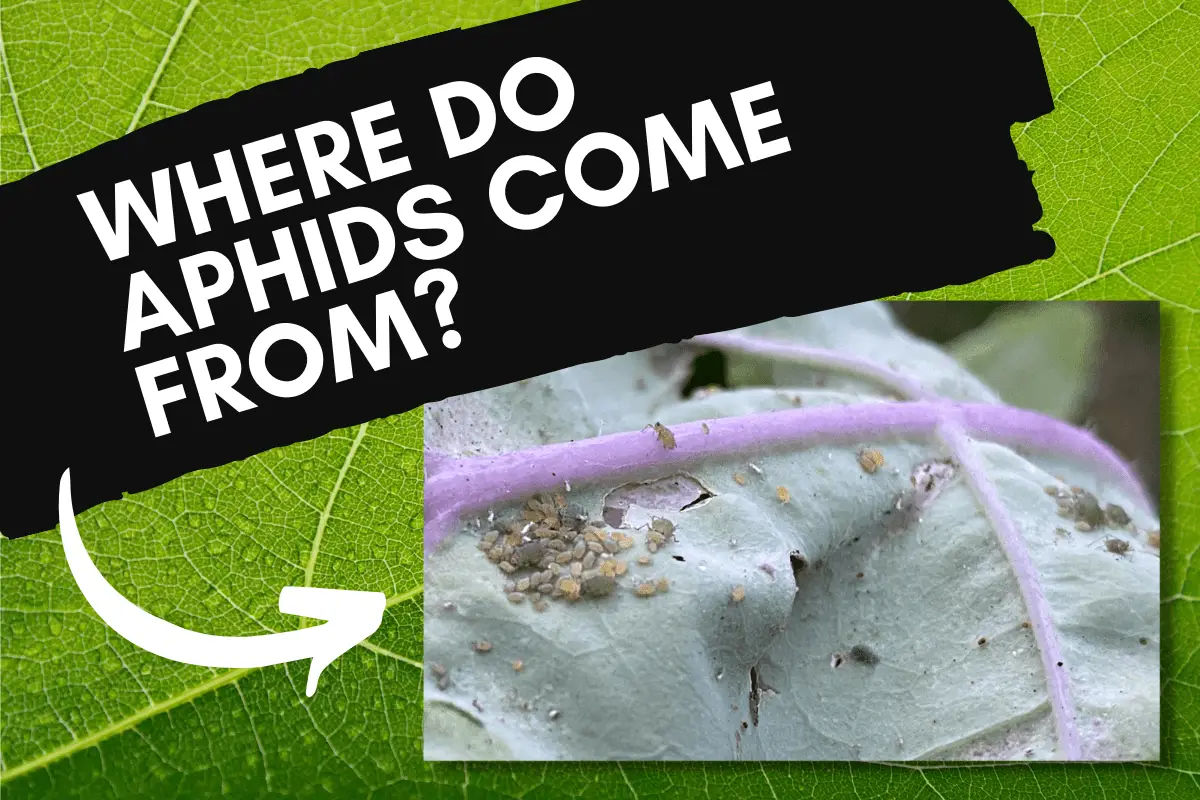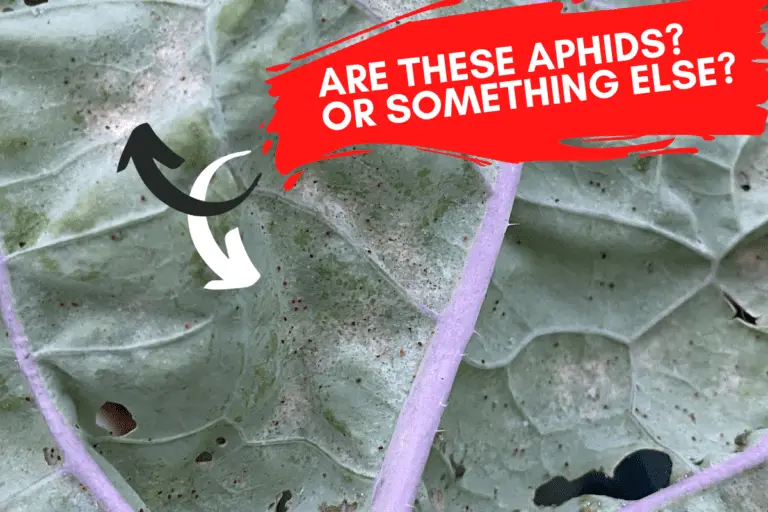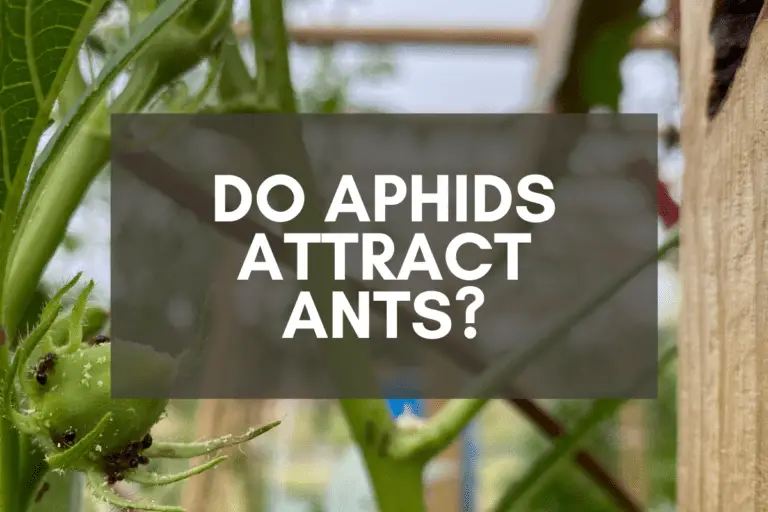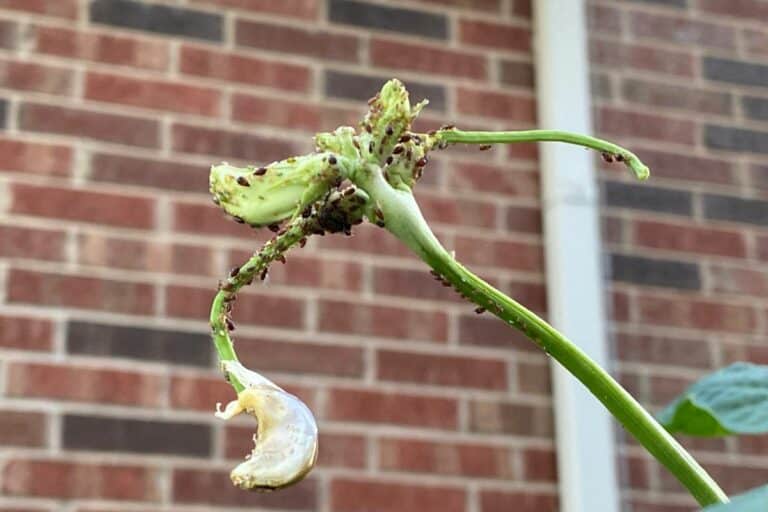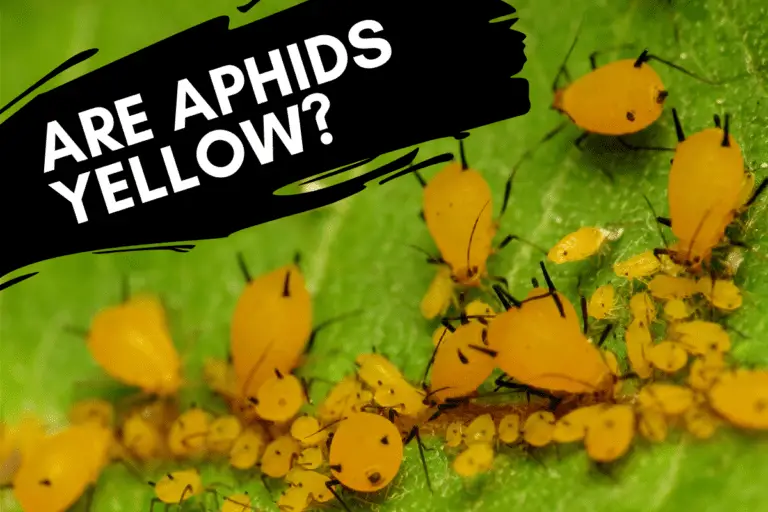Where Do Aphids Come From? Things to Consider
Like most bugs, aphids seemingly appear out of nowhere each year, arriving in small numbers before reproducing and, if not stopped, causing damage to a wide variety of plants.
But where do they come from each spring? And where do they go when the winter months arrive?
I’ve been gardening for many years, and I’ve done a lot of research on how to identify, stop, and get rid of aphids. Here’s what I’ve learned.
When aphids show up, they typically come from one of four places: aphids that survived the winter, eggs that overwintered and hatched in spring, flying aphids that migrated during summer and fall months, or aphids that traveled on infested plants purchased from nurseries and other retailers.
Although much rarer, it’s technically possible for aphids to travel from one point to another by hitching a ride on clothing or garden tools.
Last year, I was holding a cherry tomato and noticed an aphid on it. It was moving fairly quickly across the tomato, and it climbed over my finger at one point. Had I let it, it could’ve probably traveled on my person to another part of my garden.
Because aphids primarily show up in one of four ways, let’s take a close look at each so that you can learn more about what to look out for and how to stop aphids once they’ve arrived on your property.
1. Winter Survivors
Aphids are incredibly hardy bugs, so you shouldn’t assume that winter weather will kill them off. Some aphid varieties can survive in temperatures as cold as 14℉ to 23℉ (-5℃ to -10℃).
In fact, research suggests that there are several aphid species that can make it through winter temperatures as cold as 0℉ (-17℃) or even colder.
In other words, you shouldn’t assume that winter weather will kill off aphids. Aphids won’t reproduce during the winter because they need to save their energy for survival purposes, but any adult aphids and nymphs that survive the cold weather will begin reproducing again once spring arrives.
This is easy for them to do because female aphids can reproduce asexually (a process known as parthenogenesis). Most female aphids won’t seek out a male partner until later in the year when it’s time to produce eggs prior to the onset of winter.
But incredibly enough, some aphid species are anholocyclic, which means that there are no male members of the species. These aphids must overwinter as adults or nymphs so that they can keep reproducing come spring.
2. Overwintered Eggs
Although aphids have the ability to survive in colder temperatures, most aphid species produce eggs toward the end of each year in preparation for the colder months.
Aphid eggs can survive in even harsher weather conditions than adults or nymphs. Research has shown that the eggs of certain species can even withstand sub zero temperatures, some as extreme as -43℉ (-42℃).
There are high mortality rates among both live aphids and overwintering eggs, but eggs laid in late fall and early winter have a higher chance of survival than aphid adults and nymphs.
Depending on the species, aphids might lay eggs in any number of places—on the undersides of foliage, on branches and buds, on stems or bark, among fallen leaves, even atop soil.
When it comes to egg mortality, the important thing is not how cold it gets during the winter but how long the winter lasts. More than anything else, that will determine how many aphids survive the winter to hatch come spring.
3. Flying Aphids
Aphids are unique in that female aphids can give birth to both wingless and winged progeny. Here’s how this typically works.
In spring and summer, female aphids reproduce asexually and give birth to wingless nymphs, which tend to remain on the plantod their birth. When an aphid population grows too large—and when food sources become scarcer—the female aphids begin giving birth to winged nymphs.
When the nymphs are old enough to do so, they’ll fly away from their birthplace in search of new food sources. This is the primary driver behind aphid migration.
Once safely on a new plant, female winged aphids will produce wingless female aphids, and depending on the time of year and seasonal weather conditions, those wingless female aphids will produce both female and male aphids as a prelude to sexual production and egg laying.
The bottom line is this: Once female aphids begin reproducing winged versions of themselves, there’s no telling where they’ll go since they have the ability to travel and continue reproducing elsewhere.
4. Infested Plants
Whenever you buy plants at nurseries or home improvement stores, you’ll want to take a close look at them, inspecting their foliage carefully for any unnoticed garden pests.
All too often, aphids travel incognito on the undersides of plant foliage, both across town and across the world. Given the length of the journey and the kinds of plants in the new destination, the aphid mortality rate might be rather high, but if aphids are transported to your property and find host plants there that suit them, they’ll continue reproducing and gain a foothold in your garden.
When you buy new plants from a nursery or retail store, I suggest quarantining them for a few days on a part of your property that’s not adjacent to your garden. That way, you can do a quick examination each day and pay close attention to anything that might be moving or hidden among the foliage.
5. Clothing and Tools
Much like other bugs, aphids can theoretically hitch a ride from one part of your garden to another on your clothing or gardening tools.
In general, I think this is a highly unlikely mode of transportation since most aphids cluster around flowers, buds, branches, and foliage, and unlike flea bugs (hich hop when disturbed), aphids typically remain in place.
But it’s theoretically possible for them to cling to clothing or tools, so I wanted to mention this possibility.
When Do Aphids Appear?
Aphids appear in spring in one of two ways:
Most commonly, they’ll hatch from diapausing eggs, which is the technical term for bugs that are in a suspended state of development due to harsh external conditions. As soon as the conditions outside improve and reach a temperature where newly-hatched aphid nymphs can survive, female aphids will emerge from their eggs and begin the asexual reproduction process.

In less common instances, certain species of aphid are able to overwinter in their adult or nymph stages, so those aphids will begin reproducing sooner than those that overwintered in diapausing eggs.
Here’s what the aphid life cycle typically looks like, per researchers at Princeton University:
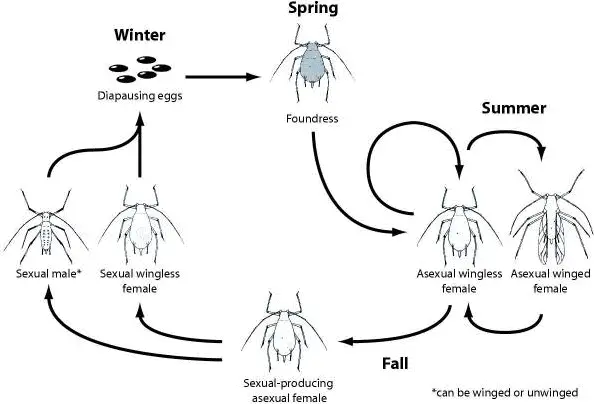
After female aphids appear in spring, they’ll reproduce asexually throughout spring, summer, and early fall, producing generations of female aphids that will continue the cycle.
If you’re seeing aphids in your garden during the spring and summer months, please know that you’ve found female aphids and that each of those aphids has the ability to produce 50+ additional female aphids during their relatively short lifespans.
If you don’t stop the aphid infestation in its early stages, you’ll have dozens, if not hundreds, of aphids in your garden in a few short weeks.
Do Aphids Fly?
Most aphids are wingless, but whenever food gets scarce, female aphids recognize the danger and produce winged versions of themselves. These winged female aphids are able to leave their place of origin and seek out new food sources, allowing the aphid population to spread from one place to another.
What’s interesting about this process is that winged aphids often look very different from the wingless female aphids that gave birth to them. When winged aphids reproduce, they’ll reproduce wingless female aphids once more, and those wingless female aphids will, in turn, produce both wingless female and male aphids, which will start the cycle all over again.
In other words, the only times you’ll ever see winged aphids is when food conditions have grown so scarce that the wingless female aphids recognize a danger to the colony and create aphids that can travel in search of new food sources.
If you see winged aphids, spray your plants immediately with an insecticidal soap or neem oil spray, following the directions I’ve laid out in articles on stopping black aphids, green aphids, and white aphids.
Where Do Aphids Lay Eggs?
Depending on the species, aphids will lay eggs just about anywhere on or near their preferred plants. Aphids eggs are typically oval-shaped, and they’ll come in a variety of sizes and colors, although most will be black, dark brown, or reddish brown.
Aphids tend to lay eggs on the undersides of leaves or near plant buds. They’ll also lay their eggs on plant nodes (where leaves and stems meet) and internodes (the space between two nodes). Some aphid species have been known to lay eggs among fallen leaves or even on top of the soil.
Aphid larvae survive cold weather by remaining inactive during the winter, a process known as diapausing. Diapausing eggs provide protection for the larvae until more favorable weather conditions arrive, which signals the larvae to develop and hatch. At this point, female aphids emerge from the eggs and begin the aphid life cycle once more.
Do Aphids Ever Go Away?
Aphids will often arrive without notice in your garden, and they will sometimes leave without notice as well for several reasons.
Aphids typically disappear during periods of extreme weather or when food gets scarce. They’ll also go away when their colonies are attacked by natural predators or when they’re sprayed with insecticidal treatments. Aphids don’t go away in winter but instead survive winter months in diapausing eggs.
If you’d like to get rid of aphids in your garden, I recommend using a homemade neem oil spray, which is a natural, relatively inexpensive insecticide that works on aphids, spider mites, and other nasty pests.
But if the aphid infestation is too advanced–and if your plant has suffered too much damage already–you might be better off throwing away the plant so that the aphid infestation doesn’t spread to other parts of your property.
The good news is that aphids aren’t harmful to humans or pets, so if you’ve got an infestation on your hands, you should worry about plant damage, but you don’t have to fret about aphids causing any harm to you, your kids, or your furry friends.
